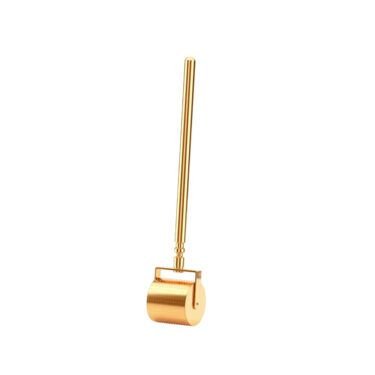Youthful, bouncy, tight and glowy are the some of the ultimate skin-care goals. Achieving them looks different for everyone, but the foundation lies in a good skin-care routine. Cleansing, toning, applying serums and moisturizing are the foundational elements to any regimen. However, the addition of skin-care tools, like at-home microneedling devices, can be a strong asset. Microneedling is one of the most common in-office treatments for improving skin’s elasticity and overall appearance. According to data recently collected by Spate, interest in the treatment is at a high, growing over 20 percent within the last year. With the world of aesthetic treatments becoming less exclusive and more accessible, interest in at-home microneedling tools is also climbing.
Spate reports that consumers are increasingly showing interest in microneedling at home, using the phrase as a hashtag and key search term. While many people are already aware of microneedling from a professional stance, knowledge of at-home tools is less common. Now, it’s easier than ever to have a spa-quality facial at home. However, choosing the right tools is essential. Like the products and ingredients you apply to your skin, understanding the devices and tools is a necessary step to finding the best fit for your skin. Ahead, we spoke with two aestheticians about the precautions and benefits of microneedling at home. Plus, they even share the best tools to add to your routine.
Featured experts
Are at-home microneedling tools safe?
While at-home microneedling is a rapidly growing topic on TikTok, experts note that attempting the treatment at home isn’t ideal. “True microneedling belongs in a clinic, with a properly qualified practitioner, because it uses professional devices that penetrate deeper into the skin, usually .5 mm or deeper,” says New York-based aesthetician Samantha Susca. Danuta Mieloch, an aesthetician and founder of Danucera and Rescue Spa, agrees, noting that while the idea may sound appealing, the risk of improper use, irritation or even infection is very real. Still, interest in home treatments continues to soar across social media, with microneedling pens and micro-infusion kits at the forefront.
Under hashtags like #athomemicroneedling, you’ll find a mix of tutorials from dermatologists and skin-care enthusiasts detailing the process and their results. According to Spate, before-and-after videos, specifically those focused on the results after one treatment, are just as popular. Interest in transformation videos on TikTok is nothing new. Some offer real-time results while others romanticize the effects, making it hard to determine if the risk is worth the reward. “The truth is, most at-home devices don’t deliver the same benefits as professional microneedling. Instead of trying to pierce the skin with unregulated tools, you’ll see far greater results by mastering your daily skin-care ritual with the right products, applied in the right way,” says Mieloch.
The tools to use instead
When it comes to at-home microneedling pens, Susca says they can be unsafe. “They claim to deliver results on par with professional devices, but there are other options for at-home treatments to mimic results or keep up with the results of professional microneedling,” she adds. Dermarolling, a mild form of microneedling, comes recommended for improving common skin and hair issues. “Dermarolling penetrates the skin in a similar way, but at a depth that is shallow enough to avoid trauma (usually 0.1-0.2mm), yet still be effective enough to gently stimulate collagen and enhance product penetration. It does this by creating micro channels in the skin’s upper epidermal layers to improve the penetration of active ingredients while still respecting the skin’s barrier,” says Susca. That said, high-quality rollers don’t pose the same threat of unnecessary injury as microneedling devices, making them better suited for at-home use. “When used correctly, dermarolling offers visible lasting improvements that mimic less intense professional microneedling treatments,” adds Susca. Think: enhanced product absorption, collagen stimulation and improved texture and tone.
How to use a dermaroller at home
If you’re thinking of adding a micro-needling device, such as a dermaroller, to your routine, you should follow best practices. “Cleansing properly, applying toner, active serums and creams along with using techniques that maximize absorption and results, should be the focus,” says Mieloch. Hygiene is the number one priority before you begin. “On clean skin, follow the pattern of dermarolling that the manufacturer of the device recommends and be sure to never go over any type of skin conditions such as moles, skin cancer, active acne, eczema or psoriasis,” says Susca. You should also be aware of the frequency to minimize irritation and damage. Susca adds that starting with a treatment once a week and gradually increasing based on tolerance is best, as is supporting your skin with the proper pre- post post-care products.


